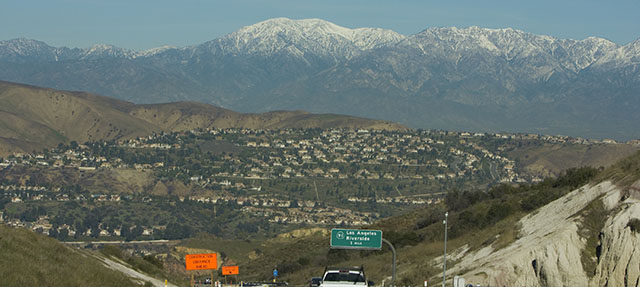This post is part of a blog series on income inequality and economic recovery. You can view all these posts on our poverty and inequality page.
The economic fallout from the COVID-19 crisis—which has hit LA County and inland parts of the state particularly hard—may exacerbate existing regional disparities in economic opportunity. Targeted investments, including in future-oriented training and education, will be key to addressing regional inequality and promoting an equitable recovery that reaches all parts of the state.
Our new report shows that income inequality is historically quite high in all regions of California, when measured by the ratio of incomes at the 90th percentile and the 10th percentile. In general, places where incomes are higher, such as parts of coastal California and the Sacramento area, also tend to have higher income inequality. Income inequality is lowest in the Inland Empire, Central Valley and Sierra, Central Coast, and the far north of the state.
Had low-income families recovered fully or more quickly from the last recession, we would see less income inequality leading into the current crisis. Instead, for low-income families in the Central Valley and Sierra, as well as Orange and San Diego Counties, it took 12 years to recover from the Great Recession. And low-income families in the far north, the Sacramento area, and the Inland Empire had not yet recovered when the pandemic began.
In contrast, high-income families across the state had returned to prerecession income levels before the pandemic—though there were still important regional differences. Recovery among high-income families took just five years in the Bay Area, compared to 12 years in the Central Valley and Sierra. But in nearly every part of the state, high-income families recovered before low-income families.
Broad labor market trends in the current recession mirror longstanding regional patterns. High unemployment in Los Angeles (12% as of October) is largely driving the state’s high overall rate, but several inland counties (Imperial, Kern, Mono, Alpine, San Joaquin, and Tulare) also have higher-than-average unemployment rates. And early evidence suggests that exits from the labor force contributed to lower unemployment rates in many Central Valley and Central Coast areas early in this crisis.
Importantly, the pandemic also has the potential to alter economic inequality within and between regions. Due to shifting patterns in the prevalence of remote work, some high-wage workers have moved away from urban areas with high costs of living—bringing possible economic benefits as well as the challenges of added infrastructure and housing needs to lower-cost regions of the state.
Ensuring the state’s economic vitality will require identifying and proactively addressing regional barriers to opportunity. No two regions are alike, so investments should be tailored to meet local needs for recovery and growth. Targeting investments to support businesses and families in regions with larger initial labor market losses, like Los Angeles and the Central Valley, would provide necessary economic stabilization. And to address longstanding regional disparities, corrective policy actions will need to focus on areas that have been subject to historical patterns of underinvestment.
Future-oriented workforce training and higher education will also be important parts of the puzzle. The economy is likely to undergo structural changes over the coming years, such as shifting toward remote work, and employment in hard-hit industries like leisure and hospitality may never fully recover. For workers who may need to transition, the community college system—with 115 local campuses that serve over 2 million students—will be essential for providing broad access to retraining at a low cost. Improving access, capacity, and student success at four-year colleges—especially in underserved regions—would also boost the employment prospects and economic outlook for current and future generations of Californians statewide.
This week, our blog is focusing on income inequality and economic recovery. Tomorrow, we examine the outsized role of the federal government in supporting recovery—and outline the options available to state policymakers.








